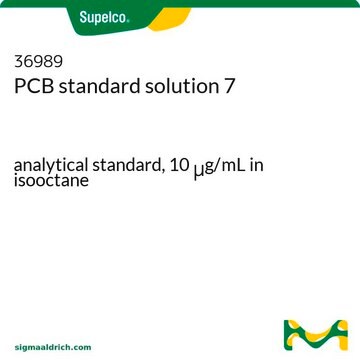おすすめの製品
グレード
certified reference material
認証
BCR®
メーカー/製品名
JRC
アプリケーション
pharmaceutical (small molecule)
フォーマット
neat
保管温度
2-8°C
SMILES記法
Clc1cc(Cl)c(cc1Cl)-c2cc(Cl)c(Cl)c(Cl)c2Cl
InChI
1S/C12H3Cl7/c13-6-3-8(15)7(14)1-4(6)5-2-9(16)11(18)12(19)10(5)17/h1-3H
InChI Key
WBHQEUPUMONIKF-UHFFFAOYSA-N
類似した製品をお探しですか? 訪問 製品比較ガイド
関連するカテゴリー
アナリシスノート
BCR298
法的情報
シグナルワード
Warning
危険有害性情報
危険有害性の分類
Aquatic Acute 1 - Aquatic Chronic 1 - STOT RE 2
保管分類コード
11 - Combustible Solids
WGK
WGK 3
引火点(°F)
Not applicable
引火点(℃)
Not applicable
個人用保護具 (PPE)
Eyeshields, Gloves
適用法令
試験研究用途を考慮した関連法令を主に挙げております。化学物質以外については、一部の情報のみ提供しています。 製品を安全かつ合法的に使用することは、使用者の義務です。最新情報により修正される場合があります。WEBの反映には時間を要することがあるため、適宜SDSをご参照ください。
PRTR
特定第一種指定化学物質
労働安全衛生法名称等を表示すべき危険物及び有害物
名称等を表示すべき危険物及び有害物
労働安全衛生法名称等を通知すべき危険物及び有害物
名称等を通知すべき危険物及び有害物
Jan Code
BCR298-25MG:
Choose from one of the most recent versions:
試験成績書(COA)
Sorry, we don't have COAs for this product available online at this time.
If you need assistance, please contact カスタマーサポート
ライフサイエンス、有機合成、材料科学、クロマトグラフィー、分析など、あらゆる分野の研究に経験のあるメンバーがおります。.
製品に関するお問い合わせはこちら(テクニカルサービス)








